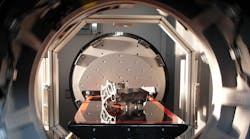Tech firms like Google, Apple and Samsung have raised curiosity lately by purchasing patents for hundreds of millions of dollars, and securing settlements in patent-infringement lawsuits for billions of dollars. While the outsized dollars will draw media focus to only a few recognizable brands, patent strategy is a critical consideration for nearly every company in every industry.
A patent is a government granted monopoly to benefit from a technical innovation for a limited period of time. Securing this monopoly can represent a powerful opportunity for a company to operate freely in the market. Similarly, failure to recognize and avoid infringement of others’ patents bears significant risks, with potentially severe financial consequences.
The “Intellectual Property” (IP) landscape in which a company operates has significant implications in the same way that regulatory requirements and macro-economic conditions impact its financial prospects. Historically, incorporating an assessment of the IP landscape into corporate strategy planning has been difficult for a number of reasons.
The U.S. Patent and Trademark Office granted more than 280,000 utility patents in 2014, with at least 3,000 patents issued in foundry and metal processing related technologies.
Patent data is organized according to proprietary classification systems that have little fidelity to industrial terminology. Finding, classifying, and finally analyzing assets from this large amount of data is a significant challenge.
While financial and general strategy domains have several familiar frameworks for analysis (BCG Matrix, Porter’s Five Forces, SWOT, etc.), IP does not yet have a consistent and widely adopted methodology for evaluation. Without a standardized analytical framework, it can be difficult to recognize important trends, opportunities and risks in the IP landscape.
Typically, IP is managed primarily by a firm’s legal team. Regardless of whether the counsel is in-house or outside, there is often a notable disconnect between the operational understanding of a firm’s technology (e.g., its product line, and related applications), and the legal representation of the same innovations in the form of a patent.
IP prosecution operates under entirely different assumptions and objectives than a firm’s product design and R&D roadmaps. Bridging a firm’s product innovation roadmap with the legal assessment of the related patent protection is critical to producing a holistic representation of the patent landscape.
Overcoming these challenges can yield a valuable perspective on an industry as a whole, as well as critical insights to the positions and strategies of key players. The Foundry Chemicals space, for example, is an area of significant technical innovation, dominated by a number of large firms with similar product lines. Analyzing the IP landscape for Foundry Chemicals can reveal a more comprehensive understanding of the innovation in this industry, as well as the positions that key players hold on the landscape. In particular, we analyzed the patent portfolios for HA International, Ashland Chemical, and Foseco.
Each of these firms has accrued a significant portfolio of IP assets over several decades. Over the years, each has also undergone significant changes in corporate structure. Ashland Chemical, for example, divested its foundry chemicals business to the ASK Chemicals joint venture in 2010, and that enterprise was sold to entirely new ownership in 2014. Foseco was acquired by the Cookson Group in 2008 (which rebranded as Vesuvius in 2012.) In each case, however, the original entities have continued to be assigned U.S. patents. Based on this continuity in terms of assignment of IP assets, portions of this analysis refer consistently to the original entity names (i.e., Ashland, Foseco, and HA) rather than differentiate further to the modified iterations.
We used the latest thinking in IP informatics tools, and incorporated input from a domain expert in the technology, as well as guidance from a patent attorney in order to develop a comprehensive IP landscape.
Sketch the Technology Hierarchy
Applying domain expertise at the first stage of the analysis is crucial to developing a representation of the technology that has a high degree of relevance and value to the operating company, or in our case, to the industry.
Your company’s CTO or product managers are ideally suited to initiate this hierarchy. Often, an effective starting point is to evaluate your firm’s products, and categorizing each one into distinctive classes within the overall technology.
In our example, we listed the products from each of the four subject companies, and standardized the categorical terminology. A hierarchical taxonomy is often the most effective mechanism to formulate this representation.
The hierarchy of classification for foundry chemicals is given as an example of how to create a hierarchy in a particular domain. In view of the limitations of the existing classification, it is possible that not all the patents held by the three companies are captured. Only the respective companies will be able to review all the patents held by them, and even choose appropriate hierarchy relevant to the domain.
The TerraCaptus Landscape Map
TerraCaptus LLC has developed a tool that allows you to define highly customized IP maps with a focus on ease of use and understanding by individuals in non-legal roles. The TerraCaptus Patent Map is the first true patent map adapted to permit user definition of layout, distribution of assets, and ranking of each asset based on a customizable metric, such as patent strength, relevance of the patent to product lines, litigation risk, and more.
This tool is ideally suited to analyzing the Foundry Chemicals landscape, and to support a deep understanding of the strategic IP positions of the subject companies. The hierarchy sketch completed in the first step is easily transcribed using the TerraCaptus Landscape Map.
The TerraCaptus Patent Map uses a radial layout that intuitively represents a cascading hierarchy in the form of concentric arcs. Starting with the innermost ring as the top-level technology space, each subsequent level of detail is represented as an additional segment in an outer-ring.
Once the layout of the landscape has been established, individual patent assets can be placed on the map in order to further the analysis. The TerraCaptus tool automatically populates a number of useful dimensions for each patent asset, and provides the capability for customized input on additional dimensions at the user’s discretion.
Depending on the number of patents involved in the analysis, this step can certainly represent a significant investment of effort from multiple stakeholders, including engineering, marketing, and legal experts. The return on this investment, however, is significant in the form of strategic intelligence that can support critical business decision-making over the long term.
For the purpose of our analysis, we have selected 193 patents to include in the Foundry Chemicals landscape. Here, it is critical note again that the assets selected for analysis, along with their placement and ranking within the map is for illustrative purposes only, and should not be considered as legal or authoritative advice. Individuals and operating companies are invited to assess this technology space for themselves, and use the TerraCaptus IP Map to facilitate their analysis.
The TerraCaptus IP Map is ideally suited to support the analysis and review of a large number of patent assets.
The interactivity built into the IP Map tool allows the user to focus on a particular sub-segment of the technology and explore the assets held within that space.
Key attributes of each patent asset are readily accessible, and further detail such as figures, claims, and citations can be launched from within the Map.
Analysis and Insights
Ashland and Foseco have a roughly equal share of intellectual property assets secured in the identified technology landscape. HA International holds a much smaller portfolio of patent assets in this landscape (fewer than 15% of the total assets) compared to its competitors.
Ashland’s IP assets appear to be focused mainly on Binders, with the overwhelming majority of its holdings concentrated in Cold Box and No-Bake technologies. HA International shares a similar focus on Binders technology, with a handful of assets in Coatings and Additives.
Foseco, on the other hand, appears to have a broader innovation agenda, with patent assets distributed across five of the six identified primary classifications.
As noted, these firms have undergone significant changes to their corporate structures over recent years, while largely retaining the assignment of patent assets to the original entity names. While this is a common practice, it complicates the task of clearly identifying the assets that should be included in the relevant analysis. A relatively in-depth search is required first to identify all of the assets associated with the component firms.
Once the assets are compiled and filtered, the TerraCaptus Patent Map tool can be used to combine the assets under a single symbology. The customization capability of a tool like the TerraCaptus Patent Map is crucial to provide the flexibility required for a multi-dimensional and intuitive analysis.
“Additives” appears to be an open technology area, with HA International holding only a single asset in Carbonaceous additives. “Hot toppings” in the Feeding Accessories space appears to be a technology area that has fallen into obsolescence: While Foseco held a dominant position in this area, no new IP assets have been issued in this space in more than 20 years.
“Premixed, Water-based Coatings” appears to be the most active area of current innovation, with several recently issued IP assets. While Ashland historically held several assets in this space, Foseco and HA International are assigned the assets issued in the past five years.
Out of the approximately 200 patent assets analyzed, fewer than 20% were issued in the past decade. Based solely on this observation, one may conclude that the opportunity for innovation — or more specifically, the opportunity to profit from innovation — in the Foundry Chemicals space identified here is smaller today than in previous decades.
From an intellectual property perspective, it may even be safe to propose that the barriers to entry in the Foundry Chemicals space are more likely associated with the capital-intensive production and distribution operations than the barrier that patent protection would provide.
Of course, a thorough strategic analysis of the Foundry Chemicals space would not be feasible without a detailed financial analysis of the firms involved. We propose that, equivalently, any meaningful analysis should also include an assessment of the IP landscape. The TerraCaptus IP Map is the most effective tool available now to provide an analyst with the means to collect, visualize, and share patent data in a transparent and intuitive manner.
Readers are welcomed to explore the interactive IP map prepared through this analysis.
With the availability of this tool organizations competing for global market share have an opportunity to assess their strengths and weaknesses, and deploy their R&D resources appropriately, to meet their strategic business objectives. Periodic monitoring of each company’s status compared to others will be critical in effective decision making, to plan strategies for business growth. In the global context, the TerraCaptus IP Map makes it possible to compare the intellectual property development and innovation status of different countries, thereby encompassing the entire foundry industry. We hope that this article will generate interest for experts within the industry to explore its patent landscape and evaluate their company’s positions in this space.
Conclusions
• There is a need to develop industry-specific classification of innovations for an effective comparison of the Intellectual Property status of different organizations.
• The landscape-mapping tool developed by TerraCaptus can be used effectively by organizations to map their IP and gain useful insights to make more effective business decisions.
• Periodic monitoring of IP status using a patent landscape mapping tool will help organizations to make better decisions on planning and deploying R&D resources.
Shaheeb Roshan is a partner with Terracaptus LLC, an online auction platform that links buyers and sellers of intellectual property to maximize asset value and simplify IP transfer. Contact him at [email protected]
Christopher B. Austin is an attorney with Michael Best and Friedrich LLP.
Dr. H. Roshan is the chief metallurgist with Maynard Steel Casting Co., a Milwaukee foundry.









